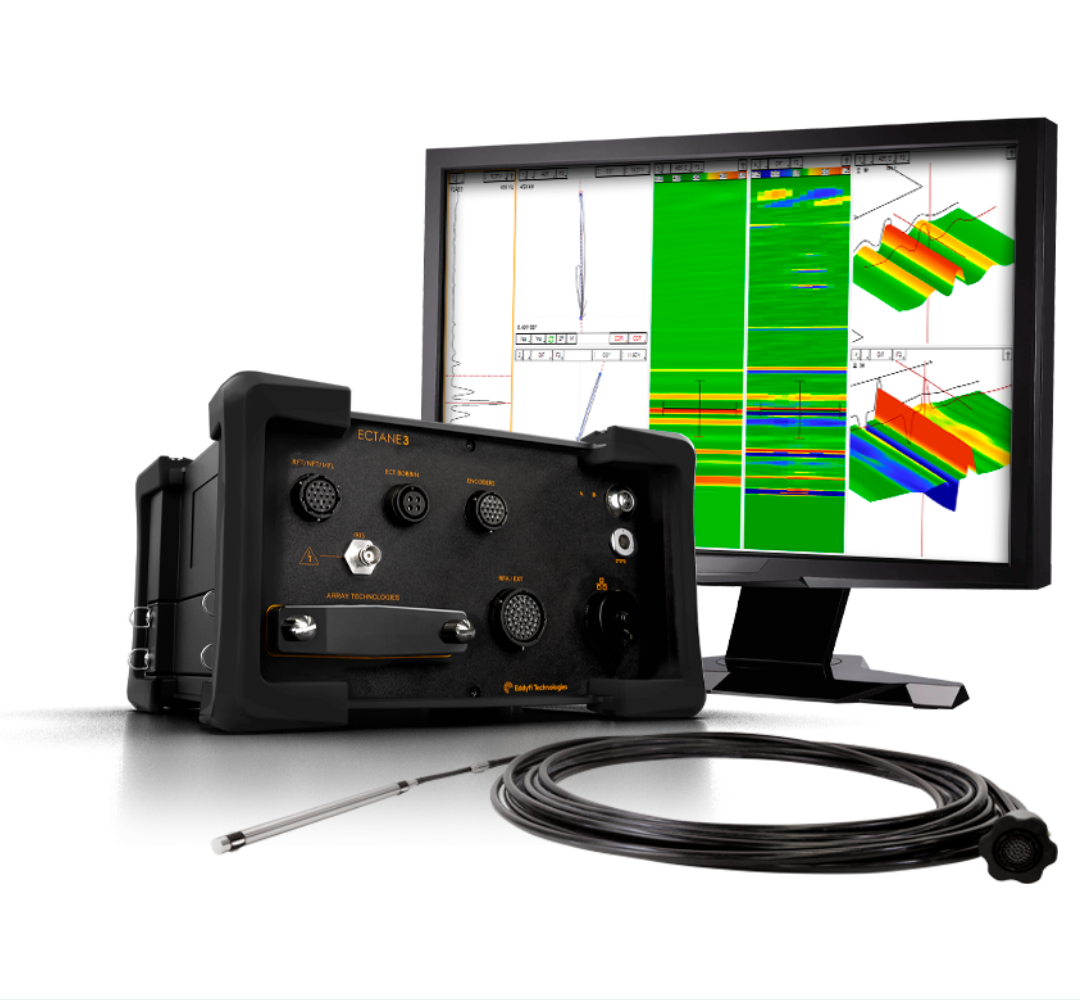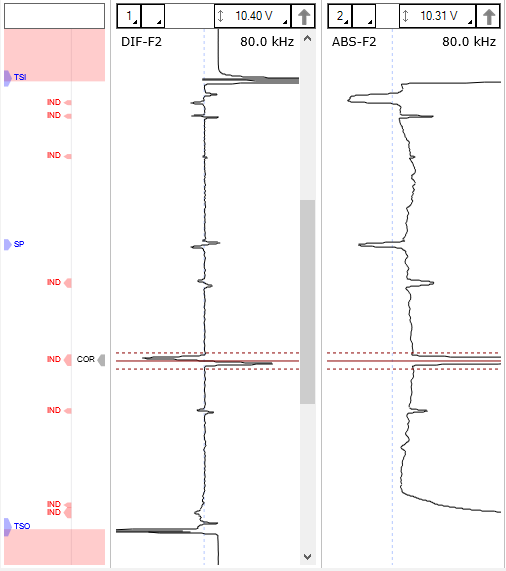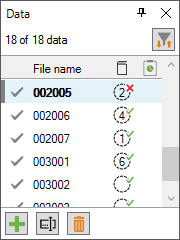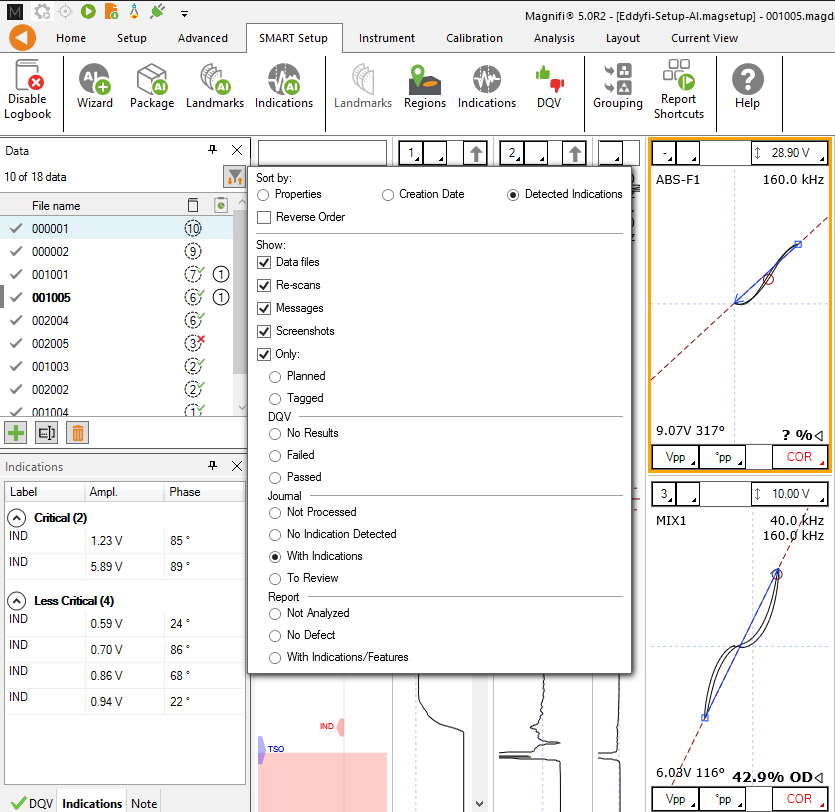How Artificial Intelligence Enables Real Time-Savings in Heat Exchanger Tubing Inspections
Ask an expertStep into the high-stakes realm of non-destructive testing, where precision meets urgency in a relentless quest for flawlessly executed reports. Within this world, analysts navigate a landscape where the difference between catastrophe and seamless operations lies in their ability to identify critical defects swiftly and accurately in heat exchangers. Tubing applications add another layer of complexity, as inspection analysts constantly wrestle with the intense pressure to pinpoint flaws with absolute precision within strict time constraints. Explore the challenges and demands of this unforgiving domain, where the pursuit of accuracy is not merely a goal but an absolute necessity.
The Challenge
Ensure complete data acquisition along the entire heat exchanger tube length, especially on the far side.
The primary challenge in non-destructive testing (NDT) for heat exchanger tubing inspection is ensuring a comprehensive examination of the entire tube length, particularly the far side, due to the constrained and intricate structure of heat exchanger tubes. The design of heat exchanger tubing, often with multiple, tightly packed tubes, limited access points, and varying tube materials, creates obstacles for effective inspection. This intricate layout obstructs the thorough examination of the far side, posing difficulties in detecting potential defects or irregularities. Despite technological advancements in NDT, the complex geometry and restricted access within heat exchanger tubing continue to present a persistent challenge, impacting the thoroughness of inspections vital for ensuring the integrity and performance of these critical components in various industrial processes.
The Solution
Use artificial intelligence for detection and data quality validation to ensure comprehensive data acquisition.

The integration of artificial intelligence (AI) tools has transformed the inspection landscape by offering advanced tools that enhance accuracy, efficiency, and reliability. AI plays a pivotal role in streamlining and optimizing various NDT processes, enabling quicker and more accurate defect detection and analysis. In the specific context of tubing inspection, Magnifi® software by Eddyfi Technologies, integrated with data quality validation (DQV) tools, represents an AI-driven solution that validates signal data from tubesheets, providing immediate feedback to technicians and streamlining the inspection process from calibration to defect identification. This significantly reduces analysis time up to 50% and minimizes the risk of overlooking critical indications, promising a revolutionary impact on NDT tubing inspections. Operators can setup in less than three minutes, and Magnifi AI features are easy to learn through this concise 30-minute eLearning course.
AI-Powered Efficiency in Action
The process begins with the activation of AI detection through a user-friendly setup wizard. Analysts are guided to select the latest detection module, then the type of heat exchanger involved, covering both straight and u-bend bundles. The final step involves the activation of indication detection and parameters for the channel position correction. Once complete, the user simply needs to perform their usual through-wall hole calibration to see every potential indication in every tube being highlighted, awaiting the analyst's review as shown in Figure 1.
Activating AI detection not only simplifies indication selection but also streamlines sizing curve creation. Since the AI detection engine centers the cursor and adjusts its width for every indication detected, it is much faster for the analyst to select the indications in the calibration tube and calibrate the sizing curve.

Figure 1: Magnifi strip chart data representation with the code view on the left containing the landmarks in blue and potential indications in red detected by the AI engine. The gray mark is a reported indication from the analyst’s report.
Ensuring Full Tube-Length Data
To meet the industry's demand for comprehensive data acquisition along the entire tube length, particularly on the far side of the tube, AI detection capabilities provide a solution through the activation of a data quality validation test during the acquisition process. This real-time validation ensures that each tube has signal data from both tubesheets and reports the test result in the tubelist. As shown in Figure 2, the visual cue provides immediate feedback to the technician and allows them to take action if the result is negative, whether that be re-acquiring the data or adding a note to the analysis about the condition of the tube.

Figure 2: DQV test results visible in tubelist with a red x representing a failed test and green checkmark representing a passed test.
Swift Identification of Key Defects through Defect Grouping
Tubing inspections frequently uncover numerous indications in each tube, sometimes reaching up to hundreds. To assist analysts in identifying the most essential indications, a "grouping" feature has been provided. This allows analysts to group the indications based on their amplitude and phase ranges, rapidly highlighting the most significant ones. This capability not only boosts productivity but also increases confidence by reducing the likelihood of missing defects. In Figure 3, the information pane located at the bottom-left displays the indications by group. Upon selecting an indication from the pane, the cursor in the data file will automatically move to facilitate appropriate sizing measurement.
Effortlessly Organized Heat Exchanger with Indication-Based Sorting
When all the tools are active and correctly configured for analysis, serious time and effort-saving results can be realized. Once the logbook is enabled, analysts can screen for indication detections, DQV, and grouping across all tubes in a batch. This feature empowers analysts to assess the completeness of data and the number of potential indications in each tube without opening a single data file.
Two key strategies further optimize this process. First, the tubelist can be sorted to prioritize tubes with the most potential indications helping the analyst prioritize their time. Until now, analysts had no choice but to perform analysis in the order that the data was collected. With sorting, it’s possible to temporarily reorganize the tube list to show the tubes with the most indications at the top. Therefore, if the analyst is starting their work, it might be advantageous to start with the most difficult ones and then move down to tubes with less indications to review.

Figure 3:Magnifi interface showing the sorting and filtering capabilities when the AI detection engine and logbook feature are activated.
Second, filtering allows analysts to display only tubes with specific logbook information such as DQV test results or those with potential indications, enabling a quicker assessment of data integrity. For example, let's take a data set consisting of 400 tubes and assume an analyst has enabled all tools. Before starting the analysis, a filter is applied to the data list to show only tubes with potential indications. If the result is 40 tubes showing indications, this means that without even opening a data file, the analyst already knows that 90% of the tubes have potentially no indications and are most likely to be marked as defect free or no defect detected. This means that the bundle is mostly free of defects and the analysis will be short. Note that the opposite is also true, if 360 out of 400 tubes have potential indications, it means the majority of the tubes have potential indications and the analysis will take longer.
Performance Metrics
In Magnifi® 5.2, the probability of detection (PoD) is as follows, with a 90% confidence level:
- Support plates: 97.9%
- Tubesheets: 98.7%
- Significant* indications: 97%
Significant indications, in this context, are defined as those with a vertical signal amplitude at 50% of the calibration hole signal or a vertical signal amplitude between 25% and 49% of the calibration hole signal combined with a depth of 40%. These are the indications that must not be overlooked and should be meticulously reported.
Learn moreBenefits
- Reduce analysis time by around 50%, boost confidence by minimizing the risk of overlooking critical indications in tubing inspections and enhance overall efficiency.
The benefits of Magnifi AI tools for NDT in tubing inspection are substantial. These tools significantly enhance efficiency, reduce the risk of missing critical defects, and improve overall productivity. They are user-friendly, with a short learning curve, and ensure data quality through real-time validation. The streamlined defect identification, and sorting and filtering capabilities provide flexibility in data management and afford inspectors the confidence by minimizing the risk of missing critical indications. These tools seamlessly integrate into fast-paced inspection environments and offer PoD rates. Often inspecting hundreds of tubes, you don’t have to do it alone. To learn more about how Magnifi AI can transform your tubing inspection process and improve accuracy, reach out for more information today.








